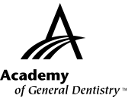|
Exercise No. 331
Subject Code: 490
Periodontics
The 15 questions for this exercise are based on the article, “Gingival biotype: a review.” This exercise was developed by Merlin P. Ohmer, DDS, FAGD, in association with the General Dentistry Self-Instruction committee.
|
Reading the article and successfully completing the exercise will enable you to understand:
- the concept of gingival biotypes;
- how gingival biotype influences restorative dentistry; and
- how gingival biotype influences surgical procedures.
|

